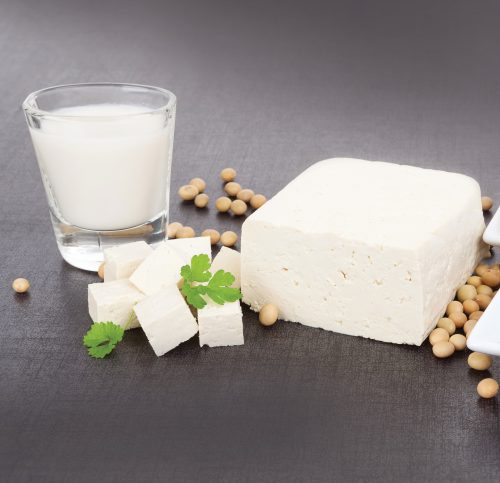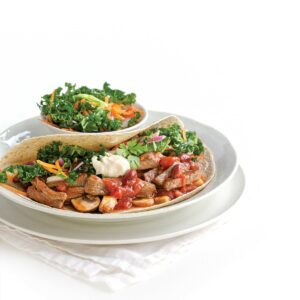
It’s easy to get plenty of protein from animals but there’s a world of plant-based sources, too. Health writer Melanie Leyshon explores the options.
Plant-based diets are no longer the preserve of just the vegetarians and vegans among us; today, more and more people are discovering their benefits. We are big advocates of eating a varied diet, so taking advantage of the many sources of protein available to us is right in line with Healthy Food Guide advice.
In New Zealand, we have no problem meeting our daily protein target. In the last adult nutrition survey, the average Kiwi got 16.5 per cent of their energy from protein, which was within the recommended 15-25 per cent range.
In an average 8700kJ diet, this equates to between 78g and 130g. Around half of this is obtained from animal products – red meat and poultry account for 26 per cent of our average intake, dairy products and eggs 17 per cent, and fish six per cent.
Eating too much red and processed meat has implications for our health, in particular our risk of developing bowel cancer. So, if you are still eating meat every day, why not branch out and try plant-based types of protein instead? Many health experts encourage us to see meat as an occasional, rather than a daily, addition to our diets. Start with meat-free Mondays, then go vege on several more days each week.
The health benefits
Protein foods have been shown to keep us feeling fuller for longer. This is because it takes longer for the body to digest protein, which, in turn, means it takes longer for hunger to kick in. This is handy if you need to lose weight because, in theory, you eat less. But it’s also good if you just want to avoid a rumbling stomach in the middle of a meeting or lecture. Many plant-based proteins tend to have fewer kilojoules and are typically lower in total fats (especially saturated fat) and higher in unsaturated fat and fibre than meat-based protein.
Reducing our saturated fat is good news for cardiovascular health and, for people managing their weight, the lower kilojoules are an added bonus.
There are other benefits, too. Studies have shown that replacing animal protein with plant protein can be beneficial to enhancing glycaemic control (blood glucose levels) in people with diabetes.
What to choose
Plant protein may not sound sexy, but once you know what counts and how to include it in your diet, it becomes easy. For example, add tofu and Quorn to stir-fries instead of beef or pork, and bulk out salads with lentils and pulses.
We recommend choosing a plant-based protein snack if you need a mid-morning boost, or when you hit that mid-afternoon slump and it’s a long time until dinner. Grab a handful of unsalted nuts, or a slice of wholegrain toast with a nut butter that has no added sugar or salt. See the HFG guide to plant-based protein (below) for more snack-ready ideas.
Post-training boost
There’s strong evidence to suggest that eating high-quality protein within one to two hours of completing weight training can help muscle recovery. Better still, studies have shown eating protein after resistance training over a period of 10–24 weeks can help to increase muscle mass and strength.
You need around 10-20g of high-quality protein to stimulate protein synthesis in the muscles.
Plant-based sources can be just as good as animal sources, so choose a wide variety to ensure you reap the benefits.
HFG guide to plant-based protein
| 3 tablespoons hummus | 3g |
| 1 tablespoon no-added-sugar-or-salt peanut butter | 4g |
| 1 slice wholegrain bread | 4g |
| 150g soy yoghurt | 8g |
| 200ml fortified unsweetened soy milk | 2-6g |
| 30g unsalted almonds | 6g |
| 30g sunflower seeds | 7g |
| 30g unsalted peanuts | 8g |
| 1/2 can red kidney beans (120g drained) | 8g |
| 1/2 can chickpeas (120g drained) | 9g |
| 1/2 can lite baked beans | 9g |
| 1/2 can lentils (120g drained) | 6g |
| 120g firm tofu | 9-16g |
| 100g Quorn mince | 18g |
Recipe ideas
Tofu stir-fry with Asian greens, chilli and lemongrass
Indian-style spiced kumara salad
Article sources and references
- Biolo G et al. 1997. An abundant supply of amino acids enhances the metabolic effect of exercise on muscle protein. American Journal of Physiology 273:E122-9https://www.ncbi.nlm.nih.gov/pubmed/9252488
- Harland J & Garton L. 2015. White paper: The plant-based plan, alprofoundation.orghttp://www.alprofoundation.org/files/White-Paper.pdf
- Ministry of Health. 2015. Eating and Activity Guidelines for New Zealand Adults. Wellington: Ministry of Healthhttps://www.health.govt.nz/publication/eating-and-activity-guidelines-new-zealand-adults
- Position of the Academy of Nutrition and Dietetics, Dietitians of Canada, and the American College of Sports Medicine. 2016. Nutrition and athletic performance. Canadian Journal of Dietetic Practice & Research 77:54https://www.ncbi.nlm.nih.gov/pubmed/26920240
- Tipton KD & Wolfe RR. 2001. Exercise, protein metabolism and muscle growth. International Journal of Sport Nutrition & Exercise Metabolism 11:109-32https://www.ncbi.nlm.nih.gov/pubmed/11255140
- Wolfe RR. 2006. Skeletal muscle protein metabolism and resistance exercise. Journal of Nutrition 136:S525-8https://www.ncbi.nlm.nih.gov/pubmed/16424140
- World Health Organization. 2015. Healthy diet. Fact sheet N°394, who.int/mediacentre/factsheets/fs394/en/https://www.who.int/nutrition/publications/nutrientrequirements/healthydiet_factsheet394.pdf
www.healthyfood.com










